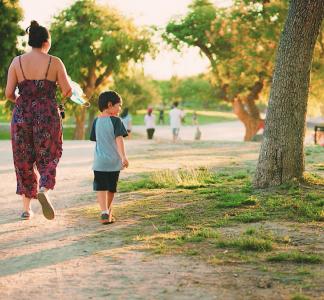Report: Albuquerque park access lacking for vulnerable communities, but expanded transit could help
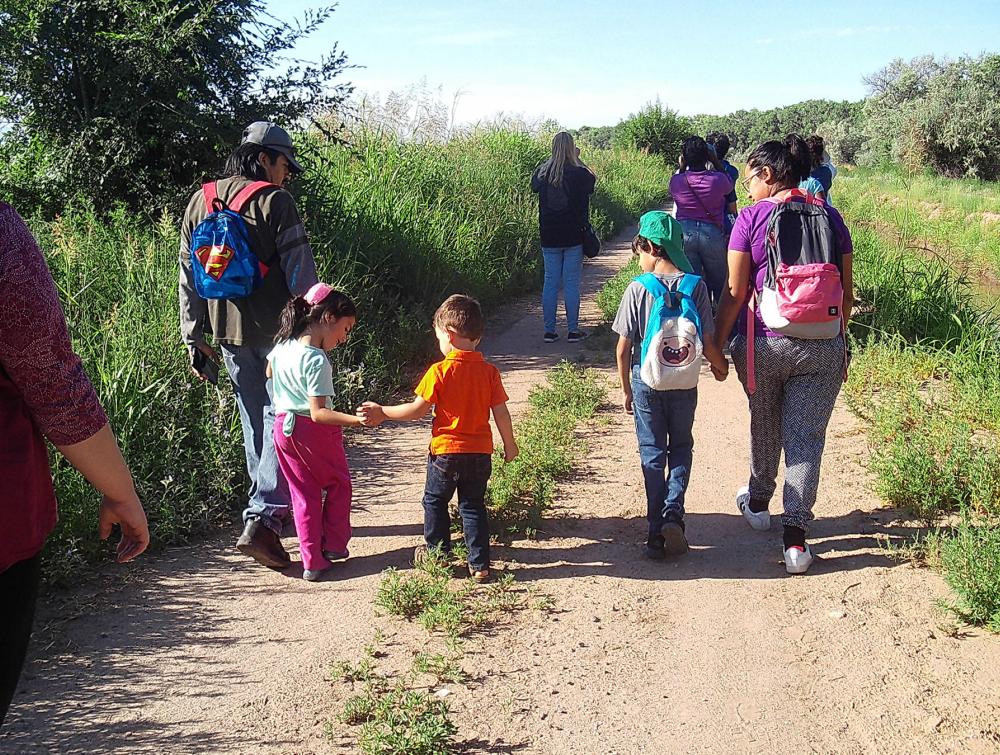
Valle de Oro National Wildlife Refuge, New Mexico
Cecilia Beltran, USFWS
Investing in public transportation, park upgrades would improve equity
Fall and winter may be the time Valle de Oro National Wildlife Refuge is at its best. That’s when this former farm a few miles south of downtown Albuquerque comes alive with cackling geese, American kestrels and sandhill cranes, and the refuge’s potential as a restored and revivified piece of Middle Rio Grande Valley wetland habitat is most evident. After the sun goes down, stars twinkle in surprisingly clear skies overhead.
But what if you can’t get there to see any of it? Valle de Oro is an urban refuge, specially geared toward educating and connecting people with the outdoors, but its gifts are not equally accessible to everyone. In fact, it’s one of several parks and public lands in and around Albuquerque that are underserved by public transit, as analyzed in a new report from The Wilderness Society.
Tools & Resources
Valle de Oro sits an estimated 30-minute drive from 60 percent of New Mexico's population, but to many, it remains just out of reach—for example, the 38 percent of low-income families in Albuquerque that don’t enjoy access to a private vehicle. Such gaps in green-space access are especially concerning for people with low income, shortened life expectancy and more exposure to pollution. In Albuquerque, areas affected by these factors tend to be those with larger populations of Black people, Indigenous people and people of color, pointing to a legacy of systemic racism and inequality.
Albuquerque, and New Mexico at large, is fiercely proud of its beautiful Southwest landscapes. Roughly three-quarters of people in the state call themselves outdoor recreation enthusiasts, and 82 percent support increased access to public lands. But we have a lot of work to do to translate those ideals into action. Making parks in the area truly equitable both physically and culturally will require changes that range from making the transit system more inclusive to expanding and improving the parks that vulnerable populations can most easily reach. Our report demonstrates both the urgency of these needs, underscored by the pressures of the COVID-19 pandemic, and the opportunities for Albuquerque and Bernalillo County officials to take meaningful action to address them.
Key report findings:
-
Albuquerque has a history of prioritizing land conservation, as reflected by a network of regional, state and federal public lands including Valle de Oro National Wildlife Refuge, Petroglyph National Monument and the city-managed Elena Gallegos Open Space. But while parks in the area are abundant, access to them—and comfort in them—is not equitable.
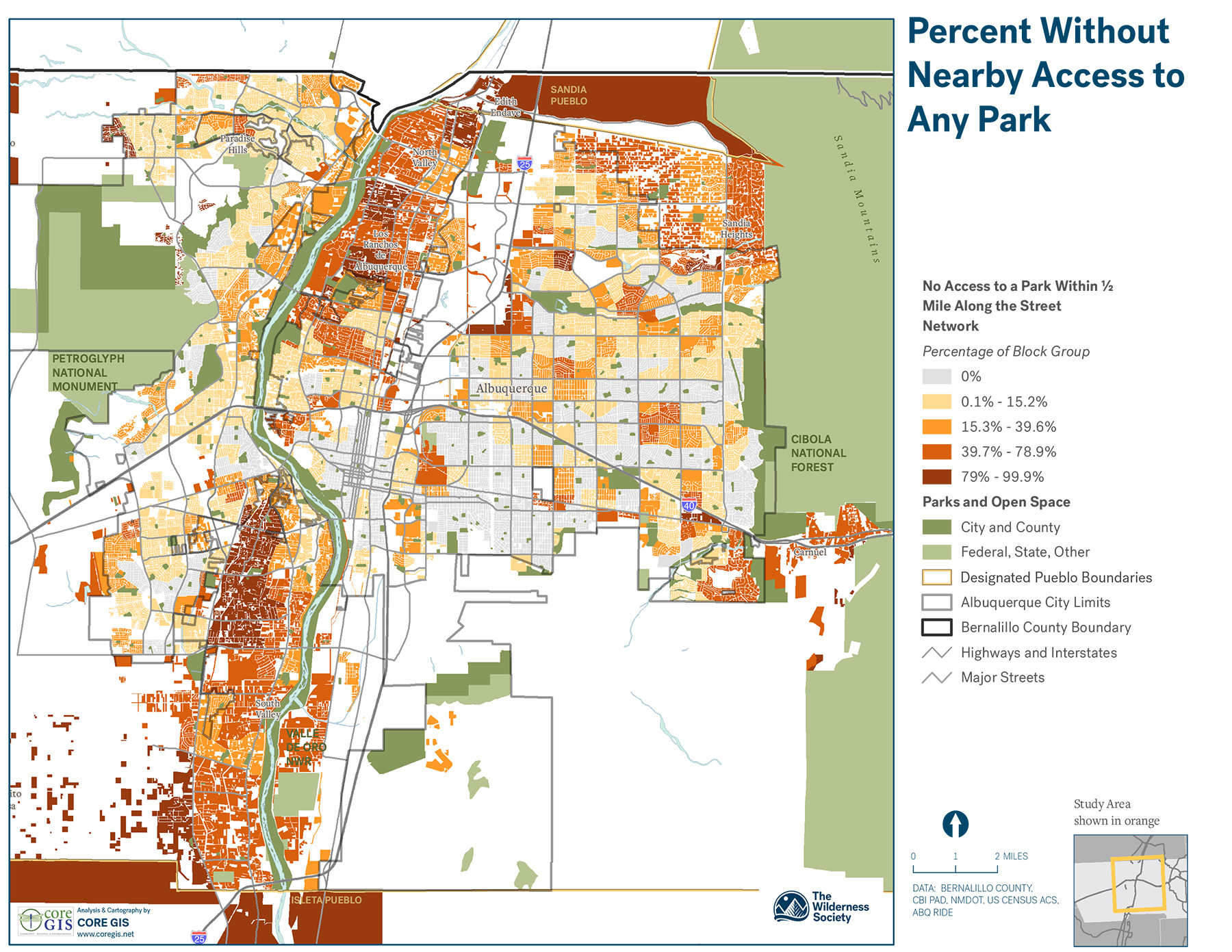
-
Albuquerque is a multicultural city and communities in the city that are most vulnerable to health and environmental risks tend to be those that are predominantly people-of-color and have less access to parks, green space and public transportation. These areas are mostly in historically underserved South Valley, International District and Westgate as well as parts of the Downtown and North Valley neighborhoods.
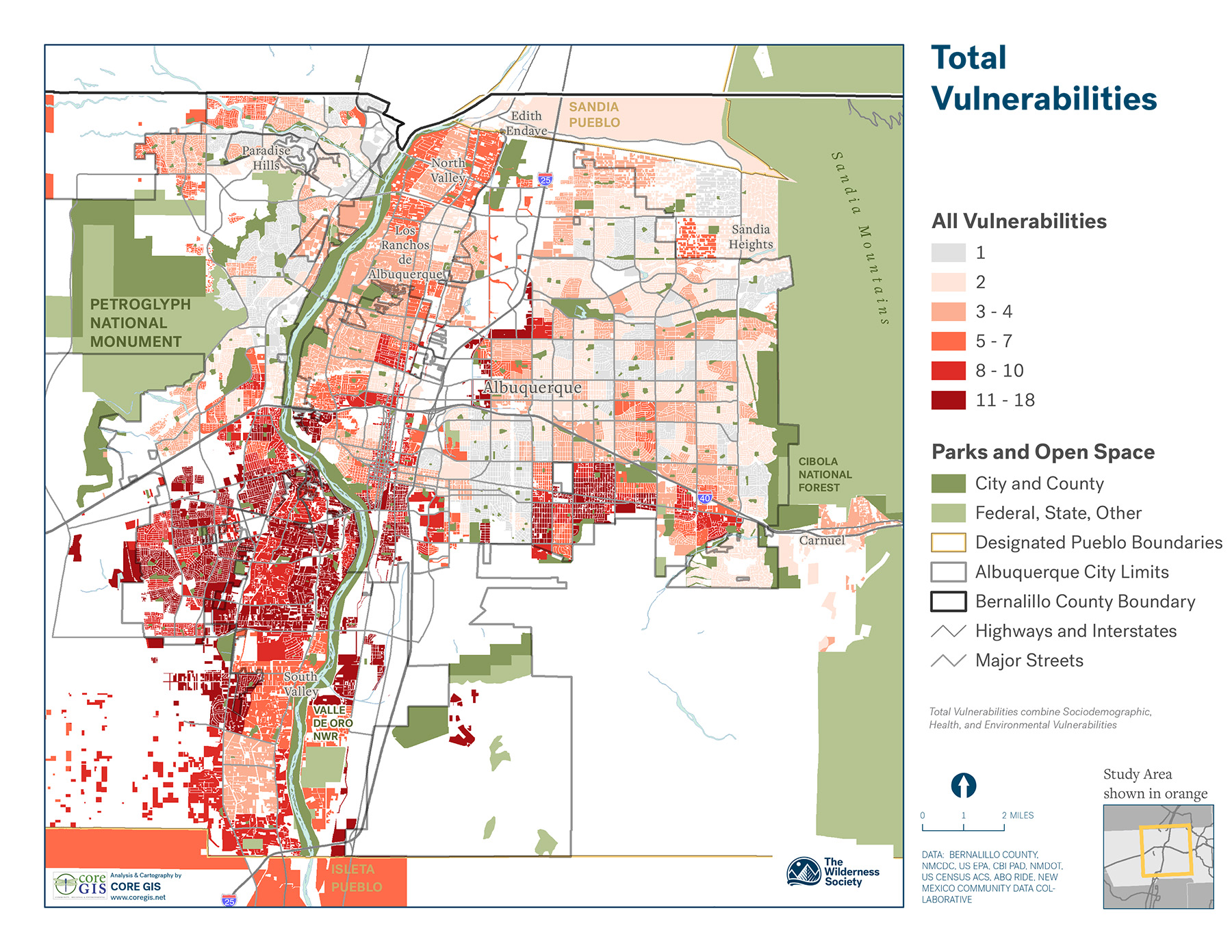
Above: Map showing highly vulnerable areas of Albuquerque, measured by an agglomeration of factors like life expectancy, obesity, respiratory hazards, unemployment and low household income.
-
In particular, low-income families and Black people, Indigenous people and people of color in Albuquerque lack access to large, high-quality and well-maintained parks. Many residents don't have cars and public transportation to reach parks is lacking, especially on the weekends. Additionally, while parks are abundant, funding for them is low on a per-resident basis, according to the Trust for Public Land.
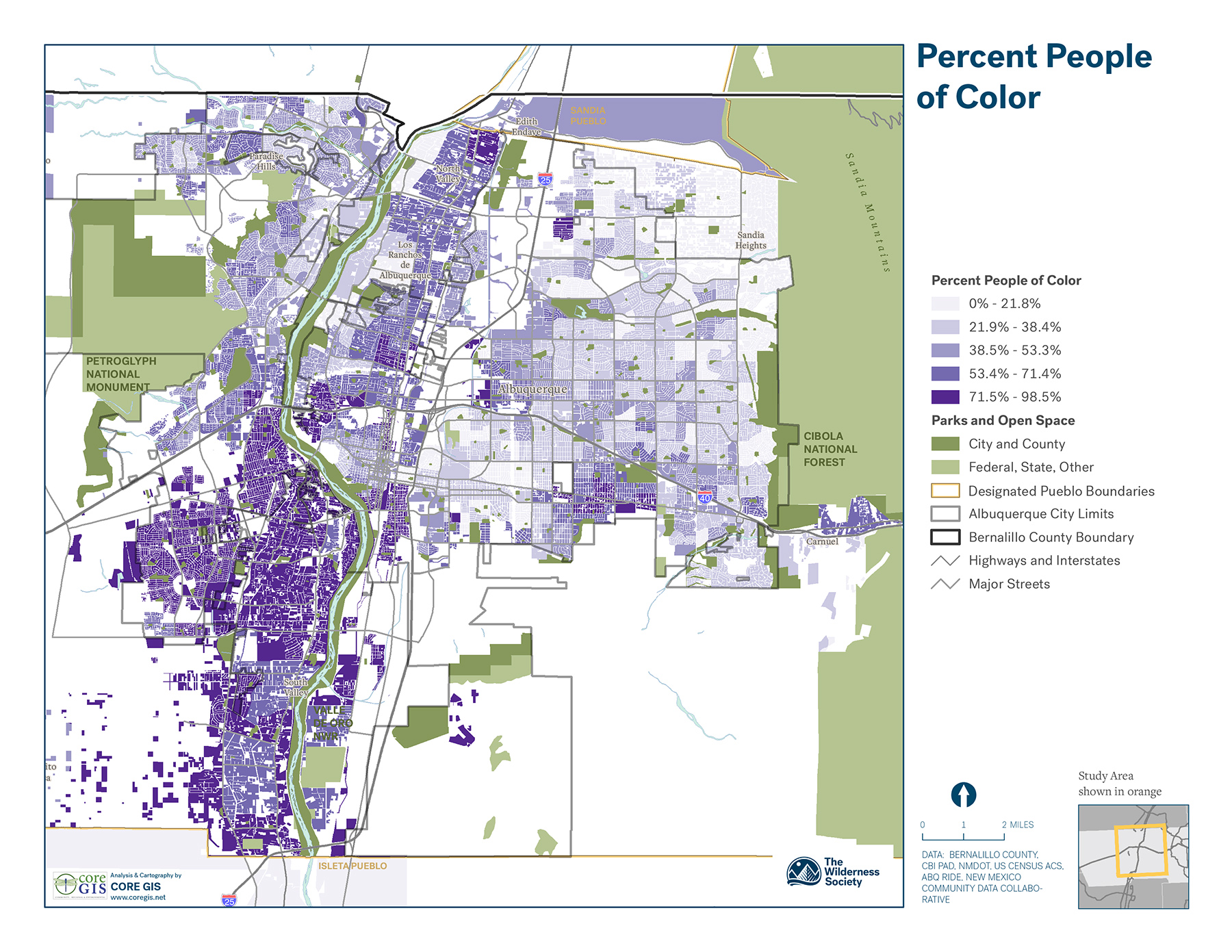
-
Improved parks and green spaces, and increased access to them, would bring many benefits, including improved mental and physical health. Access to green space is especially important for children and people in a lower socioeconomic class, as measured by employment and other factors. The ongoing COVID-19 pandemic has emphasized the importance of parks and green space as places to safely exercise or seek a simple respite from daily stress and uncertainty.
Our policy recommendations:
-
Invest in a pilot “Park Transit Line” to take community members from neighborhood hubs to parks and open spaces that are otherwise inaccessible by public transit.
-
Increase accessibility and extent of bike-share and bike-ownership programs. Albuquerque should also invest in safe biking infrastructure and increase staff and funding for programs to increase pedestrian and bicyclist safety.
-
Increase access to public transportation on weekends, including to parks, to better serve vulnerable populations. These changes should be informed by a community-led evaluation of where and when increased access is most needed.
-
Invest in a project using open-source mapping data to update maps of trails, parks, open spaces and other features.
-
Invest in park and trail maintenance and improvements including signs and environmental education features geared toward a multilingual or multicultural audience, as well as features to make parks fully accessible to people with disabilities. These upgrades should be especially prioritized for communities that don't currently have access to high-quality parks.
-
Hire and train more maintenance staff in Bernalillo County to ensure they can effectively manage and maintain parks, especially in light of increased usage during the COVID-19 pandemic.
-
Integrate nature into all aspects of new and existing Albuquerque parks and other public features. Follow the example of Bernalillo County in installing stormwater management features that also provide natural spaces for residents.
-
Continue investing in health programs centered around access to nature, community gardens, “greening” schoolyards and other actions that promote the link between the outdoors and physical and mental health benefits.
-
Keep incorporating local research in an ongoing push to reimagine parks and open spaces that best serve the community and make residents feel welcome, including making parks safe, accessible and welcoming to LGBTQIA+ residents, immigrants, people of color and people with disabilities or limited mobility.
-
When it’s safe to continue doing so, invest in community centers and programs that plan events in parks offering food, volunteer opportunities, music and other entertainment. Such events aid both communal cohesion and a strong connection to nature.
-
Launch a multilingual, culturally inclusive public awareness campaign to increase knowledge among Albuquerque communities about the city’s network of parks, how to visit them and how to volunteer or advocate for them.

